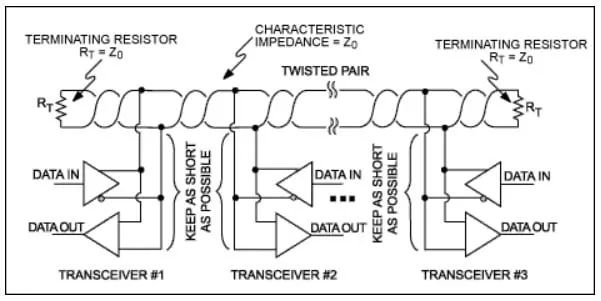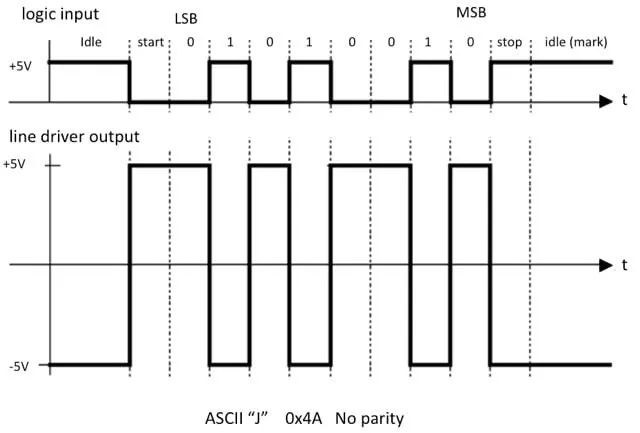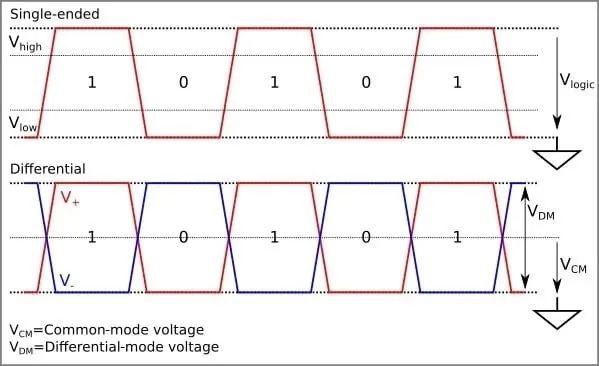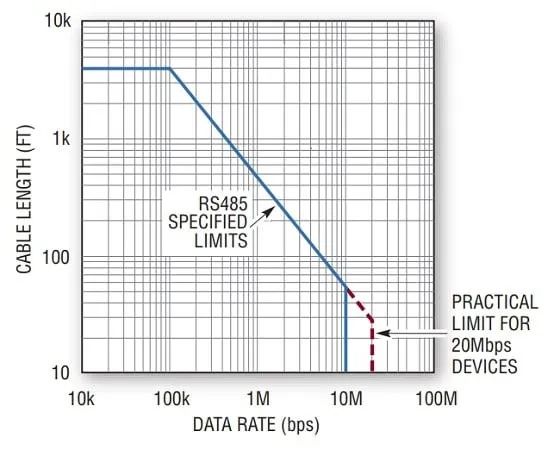Follow+Star Public Account, don’t miss out on exciting content

Source | Semiconductor Industry Observation
Although both standards have long been used for serial communication, RS-485 offers valuable features that RS-232 does not. Learn more in this article.
Any form of communication requires rules to help ensure everyone stays consistent. In the electronics field, these rules take the form of standards—a widely applicable set of design specifications published as recommendations by industry associations. Following these recommendations can help engineering devices communicate using the same electronic language, enabling efficient and reliable communication.
RS-232 (with “RS” standing for “recommended standard”) was introduced in the 1960s as a standardized interface for serial communication. While it is still useful for this purpose, alternatives such as RS-485 have emerged, significantly enhancing performance. In this article, we will explore the most important differences between RS-232 and RS-485.
01
Point-to-Point vs. Multipoint
RS-232 is a point-to-point specification, meaning one RS-232 device can only communicate with another RS-232 device. Although with a bit of creativity, RS-232 can be transformed into a “multipoint” network shared by more than two devices, this capability is not included in the standard itself.
In contrast, RS-485 is a multipoint specification, making it more flexible. Multiple RS-485 devices can communicate without any special modifications or interface circuits, as shown in Figure 1. RS-485 drivers must be able to handle 32 “unit loads,” which means 32 receivers with a 15kΩ input impedance.

02
Voltage Levels
The original RS-232 standard specified logic levels of +25 V and -25 V. The claim that a typical home serial interface requires a signal swing of 50V is hard to believe, but that was over sixty years ago. Subsequent revisions of the standard reduced the signal swing to ±12V, and then to ±5V. The voltage levels in RS-485 are much lower, which is one of the most significant differences between the two standards.
Figure 2 illustrates the logical level data flow and the RS-232 version of the same data flow. Note that in addition to the voltage level conversion, the polarity is also reversed. A +5V logic high level becomes -5V, while a 0V logic low level becomes +5V.

03
Single-Ended vs. Differential Signals
Typical logic level signals and RS-232 signals are single-ended, meaning one information signal requires one electrical signal. The electrical signal is referenced to a 0V ground potential. RS-485 signals are differential signals, meaning one information signal requires two complementary electrical signals. The receiver extracts information by comparing the two signals.
Figure 3 illustrates the difference between single-ended and differential signals.

The minimum differential amplitude of signals generated by RS-485 compatible drivers is 1.5V; the minimum differential detection threshold for RS-485 receivers is 200mV. This ensures that even if the signal significantly degrades while being transmitted from the transmitter to the receiver, there is still enough margin to reliably detect the digital data.
Figure 4 provides a visual representation of the minimum driver and receiver amplitudes for RS-485.

04
Signal Swing
The signal swing of the RS-485 bus is much lower than that of the RS-232 interface. This is a significant advantage of RS-485, as smaller amplitude signals can simplify circuit design and improve efficiency. The lower amplitude combined with differential signaling does not increase the device’s sensitivity to EMI. In fact, RS-485 communication is more robust than RS-232 communication.
A higher data rate is another benefit associated with smaller amplitude signals. The maximum data rate for RS-232 is about 1Mbps. Theoretically, the maximum for RS-485 is 10Mbps—actually, as shown in Figure 5, this limit is even higher.

05
Signal Encoding
RS-232 describes a complete solution for serial communication. It includes the following requirements:
Electrical characteristics
Signal characteristics
Connection schemes
Mechanical interfaces
In contrast, RS-485 only specifies electrical characteristics.
Neither standard defines a signal encoding method. However, RS-232 typically uses a Universal Asynchronous Receiver/Transmitter (UART) signaling scheme, which defines start bits and stop bits, parity, and data encoding, among others. RS-485 also often uses UART.
As shown in Figure 6, a byte of UART data consists of:
One start bit
Eight data bits
One stop bit
If the receiver knows the data transmission rate or baud rate of the transmitter, it can use an internal timer to correctly sample the incoming data bits. UART communication does not require additional signals to organize binary data blocks. It does not even need an external clock signal—using internal timers in the transmitter and receiver configured to the same baud rate to generate and interpret voltage levels.
06
Key Points
RS-232 and RS-485 have similar names and uses, but they exhibit significant differences in specifications and implementation details. Their performance characteristics also differ greatly, with RS-485 surpassing RS-232 in almost every aspect. While RS-232 is a convenient and satisfactory interface for certain applications, RS-485 is a superior, more future-oriented solution for serial communication.
Original link
https://www.allaboutcircuits.com/technical-articles/whats-the-difference-between-rs-232-and-rs-485/
———— END ———— ● Column “Embedded Tools”● Column “Embedded Development”● Column “Keil Tutorials”● Selected Tutorials from Embedded Column
● Column “Embedded Tools”● Column “Embedded Development”● Column “Keil Tutorials”● Selected Tutorials from Embedded Column
Follow the public account reply “Join Group to join the technical exchange group according to the rules, reply “1024 to see more content.
 Click “Read the Original to see more shares.
Click “Read the Original to see more shares.